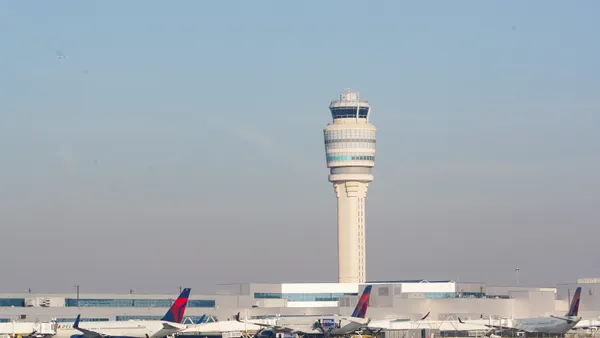Dive Brief:
- The California High-Speed Rail Authority finally approved its 2018 business plan, which reflects funding and cost challenges for the $77 billion San Francisco Bay area-to-Anaheim bullet train, according to the Associated Press report.
- The authority issued its draft of the 2018 business plan in March, and the final version approved by the agency's board last week reflects changes based on feedback during the last few months. This latest version includes a decrease in projected ridership and an acknowledgment of the financing challenges, including that the authority does not have enough cash to completely cover the costs of its first Northern California route.
- Rail authority CEO Brian Kelly has asked the state legislature to extend by 20 years financing through California's cap-and-trade greenhouse gas program, which would help fund construction. Outgoing California Gov. Jerry Brown has also requested the authority to conduct both state and federal reviews, which should shorten up that process.
Dive Insight:
The authority is required to produce a new business plan every two years in order to keep state lawmakers and the public informed about the bullet train project. And it was with the release of the March draft plan that the rail agency announced projected costs for the line had risen to more than $77 billion, almost double the initial estimate of $40 billion, and that the opening of the first phase would be delayed four years to 2029. The authority also added that total costs could increase to more than $98 billion by 2033 when the full line is scheduled to be operational.
According to a report from the Los Angeles Times, every six months of delay will likely add hundreds of millions of dollars to the project's price tag, leaving the next governor and state lawmakers with the burden of digging up funds for tunneling through three mountain ranges, land acquisitions and overcoming other logistical challenges. As it stands now, the 2033 completion date identified in the plan, according to the Times, does not include a strategy for financing the entire project.
The U.S. Department of Transportation delivered the latest batch of bad news for the bullet train when it announced that its Office of Inspector General would audit the $3.5 billion of federal grant money that has been delivered to the project thus far.












